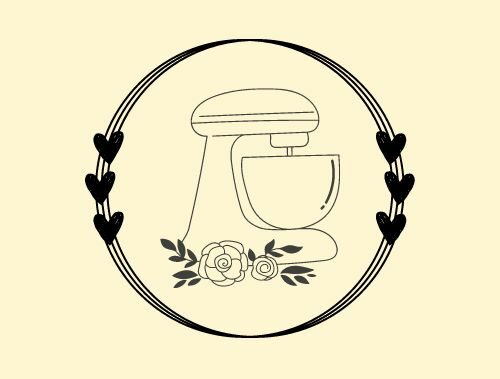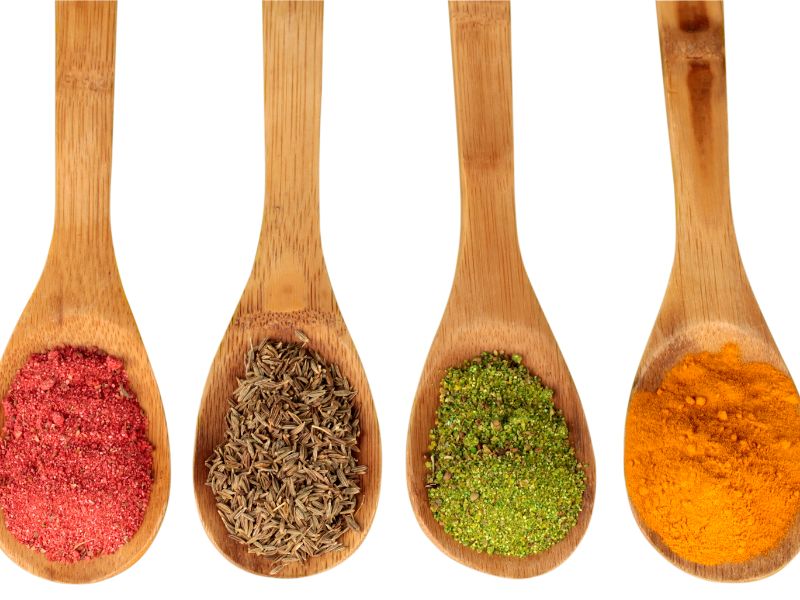In Baking, spices add a special touch to our baked goods. But many bakers, old and new, ask the question, ‘Do spices go bad?” The answer is yes, spices can go bad over time in the sense that they lose their freshness and potency.. Understanding the shelf life and how to store them can make a significant difference in helping to maintain their freshness longer.
The Shelf Life of Spices

when we talk about the shelf life of spices, we are referring to how long they can keep their flavor and potency. Just like how bread goes stale, spices also can lose their zing. But unlike bread, spices don’t exactly “spoil” in a traditional sense. Instead, they become less effective in adding flavor to our baked goods.
Whole Spices vs. Ground Spices
The form in which we buy and store spices plays a big role in how long they last.
Whole Spices
Cinnamon sticks, whole cloves, and peppercorns are in their natural form. Their protective outer layer helps to keep the flavor inside. When stored properly, whole spices can stay fresh and keep their flavor for about 2-4 years.
Ground Spices
These spices are, of course, in powder form, such as ground cinnamon or ground ginger. Once these spices are ground, they are exposed to more air and can lose their flavor faster. Usually, ground spices can keep their kick for 6 months to a year. After that, they may still be okay to use; but they won’t be as punchy.
Factors That Affect Shelf Life
Several things can influence how long spices stay fresh. Sunlight and heat can make spices lose their flavor faster. Store them in a cool dark place. Moisture is not a friend of spices. Just like when sugar or salt gets wet, they clump together. Spices will do the same. This can even lead to mold formation. Not good. And air can also affect spices and their loss of freshness. When exposed to too much air, spices can get “stale.” Keep them in airtight containers.
Signs Your Spices Have Lost Their Freshness

Spices are common in most kitchens, and like all food items, they don’t last forever. Knowing when they have lost their touch can save you from ruining your baked goods. Here are a few things to look for.
Change In Color
If you notice that a spice has lost its rich color and looks faded, it’s a sign that it’s getting old. Seeing dark or discolored spots, especially in ground spices, may be a sign of moisture. And you know what that means? Yep, mold.
Loss Of Aroma
One of the easiest ways to check a spice’s freshness is to give it a sniff. Fresh spices have a strong, distinct aroma. If you open a jar and there’s little to no smell, the spice has likely lost its potency. In some cases, an old or moisture-affected spice may develop a musty or off-putting smell. This is a clear sign that you need to toss it.
Change in Flavor
If you’re unsure about a spice, you can do a small taste test. Remember, always be careful and taste only a tiny amount. If it lacks flavor or tastes different than expected, it’s past its prime. Some spices, when they go bad, can develop a bitter or unpleasant taste, and this can affect the flavor of your baked goods.
Texture Changes
Spices should be free-flowing. If you find that they are clumping together, it’s a sign that moisture has gotten in. Moisture can lead to mold, so it might be best to toss it. In extreme cases, especially if spices were stored in a damp environment, you might notice mold. If you see any signs of mold, toss it immediately.
Proper Storage to Prolong Spice Life

Storing spices the right way is like giving them a cozy home. When they’re comfortable, they’ll stay fresh and flavorful for longer. Here are ways to keep them at their best.
Ideal Storage Conditions
Just like how we have favorite spots in our homes, spices have their preferred places too. Spices don’t like heat. A cool dark cupboard or drawer is a perfect place. It keeps them away from the heat of the stove or sunlight streaming in from a window. And remember, moisture is a no-no.
Containers with tight-sealing lids, like glass jars or plastic tubs, are great. They keep out the air which makes your spices lose their zing. And an added bonus, these containers keep your spices safe from any kitchen splashes or spills.
Tips for Storing Large Quantities
If you are one who likes to buy your spices in bulk, or in big bags and containers, then these tips are for you.
Buying in Bulk: It’s like buying a big bag of chips. While it’s cheaper, you don’t want them going stale. For spices, once you open that big bag, consider transferring some to smaller containers. This way, you only expose a small amount to air each time you use it.
Using Vacuum Sealing: This is a neat trick! Vacuum sealing sucks out all the air, giving spices a longer shelf life. If you have a vacuum sealer, you can use it for the spices you don’t use often. And if you’re taking some out, just reseal the bag.I have to tell you that I absolutely love my vacuum sealer. Want to know more about vacuum sealers? Read this.
Label and Date: It’s easy to forget when you bought that big bag of paprika. Using a simple sticker or even a piece of tape, write down the date you opened it.
How Old Spices Affect Baking
| 🍪 How Old Spices Affect Baking 🍰 | |
|---|---|
| Color | Faded spices might not give dishes their vibrant hues. |
| Aroma | Old spices can lose their strong, distinct smell. |
| Flavor | Stale spices can make dishes taste off or lack flavor. |
| Texture in Dishes | Moist spices can cause clumps in dishes. |
| 🍞 Brought to You by wearebaking.com 🥖 | |
Baking is like creating art, and the ingredients you use matter a lot. Even though we use spices in tiny amounts, they can change your whole baked goods. So what can happen in our baked goods when your spices are not at their best?
Change In Taste
Muted or Altered Flavors: Imagine listening to music with a low battery; the sound isn’t as crisp. Similarly, stale spices might not give you the flavor burst you’re expecting. Your cinnamon rolls might lack that warm, spicy kick, or your ginger cookies might not have that zesty bite.
Unpleasant Aftertastes: Sometimes, old spices can develop off-flavors. This means your delicious chocolate cake could have a weird aftertaste if you used old chili powder for that spicy kick.
Texture and Appearance
Spices can also influence the look and feel of your baked goods.
Color Changes: Fresh spices can add vibrant colors to dishes. Old spices might not give the same rich hues. For instance, turmeric bread might not have that golden-yellow glow with stale turmeric.
Uneven Distribution: Moist or clumpy spices won’t mix well into your batter or dough. This can lead to uneven flavor pockets. Imagine biting into a muffin and getting a sudden, overpowering taste of nutmeg!
Potential Health Concerns
While it’s rare, there are some health aspects to consider.
Mold and Bacteria: Wet or improperly stored spices can develop mold. Consuming moldy spices isn’t just unpleasant; it can be harmful.
Loss of Nutritional Benefits: Some spices, like turmeric, are loved for their health benefits. But as spices age, they might lose some of these beneficial properties.
Waste and Economy
Using bad spices can also hit your pocket.
Wasted Ingredients: If a batch of cookies or a cake doesn’t turn out right because of stale spices, you’re not just wasting the spices but all the other ingredients too.
Re-baking: Realizing your dish is off and deciding to bake again? That’s double the effort, time, and ingredients.
In the world of baking, where precision and quality matter, ensuring your spices are fresh can make a world of difference. It’s not just about the taste; it’s about the joy of sharing perfect, delicious creations with loved ones.
Making the Most of Older Spices
We’ve all been there: discovering an old jar of spice at the back of the cupboard. While it might not be as potent as when it was fresh, it doesn’t mean it’s meant for the trash. While fresh spices are always preferred for their robust flavors, older spices don’t need to be discarded immediately. With a bit of creativity and some tweaks, they can still find purpose, whether in the kitchen or around the home.
Bringing Old Spices Back to Life

Toasting: Gently toasting spices can help revive some of their lost flavors. Place them in a dry skillet over low heat, stirring constantly until they become aromatic. This method works especially well for whole spices.
Grinding: If you have whole spices that are old, grinding them can release some of the flavors trapped inside. A mortar and pestle or a spice grinder can do the trick.
Doubling Up
Using More: Older spices lose their potency, meaning they won’t be as strong in flavor. If a recipe calls for a teaspoon, consider using a teaspoon and a half or even two. It’s a simple way to compensate for the reduced strength.
Blending with Fresh Spices
Mix and Match: If you have a fresh batch of the same spice, mix it with the older one. This way, you’re balancing out the flavors, ensuring your dish still gets a good spice kick.
Creative Combinations: Sometimes, blending an older spice with a different fresh spice can create a unique flavor profile. For instance, old coriander might pair well with fresh cumin, giving your dish a new twist.
Other Uses
Homemade Potpourri: Older spices, especially aromatic ones like cinnamon or star anise, can be used to make homemade potpourri. Their lingering scents can freshen up a room.
Natural Cleaners: Some spices, like cloves or cinnamon, have antibacterial properties. You can use them to make natural cleaning solutions or to freshen up carpets.
Crafts and Decor: Don’t limit spices to the kitchen! Older spices can be used in crafts, like making scented candles or decorative spice wreaths.
Final Thoughts
Spices play an important role in enhancing the taste of our baked goods. There’s a difference in how long whole and ground spices last. Storing spices in cool, dry places and in airtight containers helps keep them fresh. Over time, spices can lose their flavor, and using old spices can change the taste of your baked goods. Even if spices are old, they can still be useful in different ways. Proper storage and using your spices, before they lose their freshness and potency ensures the best flavor in your baked goods.
I hope you found this article helpful in your adventures with spices. Want to know how to measure spices accurately?
Please leave me a comment below with your thoughts
And As Always
Keep On Baking!
Taianne

I’m Taianne, the owner and operator behind We Are Baking. Baking my first cake at age 11 hooked me on creating sweet treats. Though my interest faded during childhood, it was rekindled when I married my apple pie-loving husband. I love trying new recipes, tweaking classics, and helping others learn the science and art of baking. I started We Are Baking to share tips, tricks, and favorite recipes I’ve discovered over the years. When not in the kitchen, I enjoy spending time with family and friends. My goal is to inspire others to embrace their creativity through baking. Feel free to contact me with any questions!
Taianne@wearebaking.com

